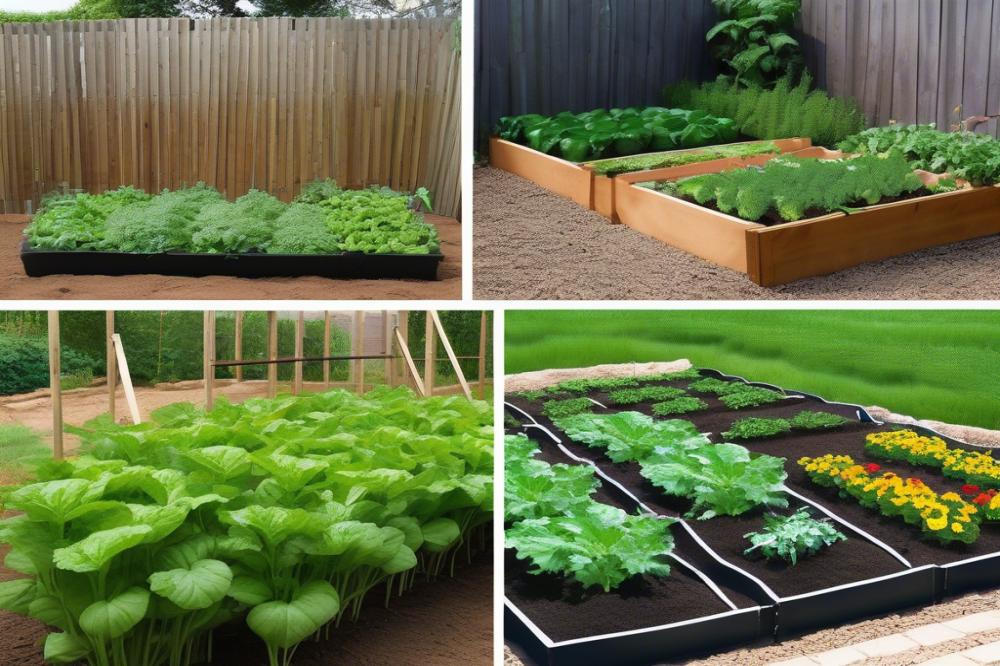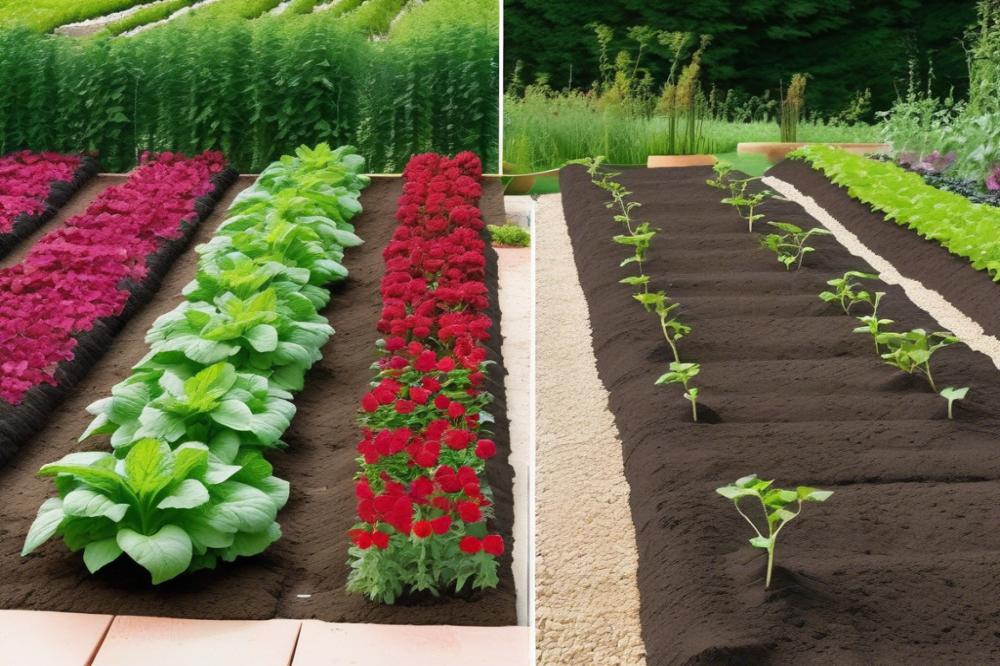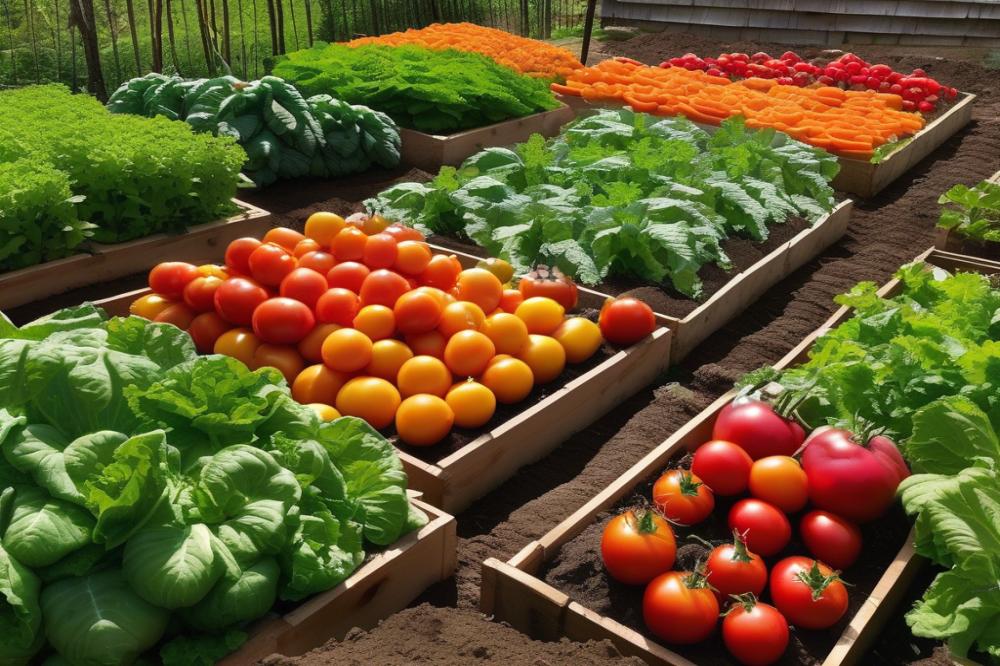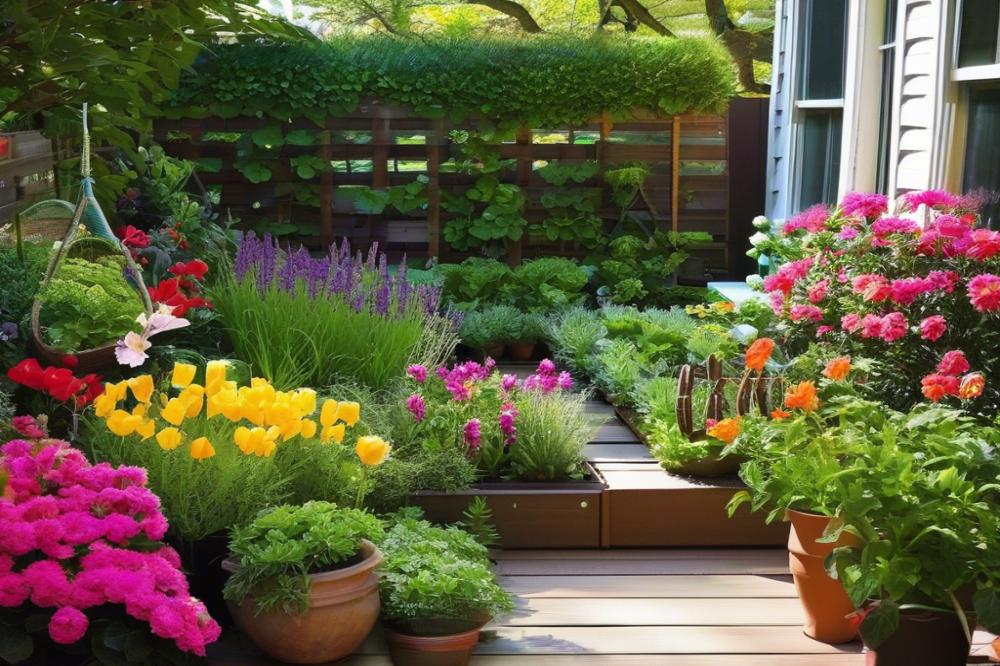Growing Vegetables in Poor Soil Conditions
Growing vegetables in poor soil conditions can seem daunting. Many gardeners face issues like compacted earth, low nutrients, and water drainage problems. These challenges can lead to disappointing harvests and frustration. However, not all is lost. By adapting gardening techniques, it’s possible to transform even the most unyielding ground into a productive space for growing food.
When soil lacks essential nutrients, knowing how to improve its quality is crucial. Techniques like raised beds can elevate your plants and improve drainage. You can also add compost to enrich the soil with organic material. This creates a fertile environment for growth. Mulching helps retain moisture and suppress weeds. Cover crops build soil structure while adding nutrients back into the ground. Each method contributes uniquely to enhancing the quality of your garden.
Soil testing is the starting point for understanding deficiencies. It reveals what is needed to nourish your plants effectively. Using organic fertilizers can address these nutrient deficiencies directly. On the other hand, practicing crop rotation can keep soil healthy over time. Growing the right poor soil vegetables ensures you get the most out of your gardening efforts.
For those with limited space, container gardening offers flexibility. Employing permaculture principles can create self-sustaining systems that benefit the soil. By applying these various solutions and strategies, anyone can cultivate a thriving garden, regardless of their starting conditions.
In this article, we will explore effective tactics to manage and improve the health of your soil. This journey involves a mix of practical advice and innovative ideas. Learn how to overcome the challenges posed by poor soil, and watch your garden flourish.
Understanding Poor Soil Conditions


Poor soil conditions can be a major challenge for anyone looking to grow healthy vegetables. These soils lack the right structure, nutrients, and moisture for strong plant growth. Several factors contribute to poor soil, making it difficult for vegetables to thrive.
One main issue is compaction. When soil gets compacted, air can’t move through it easily. This makes it hard for roots to grow. Compacted soil can result from heavy machinery, foot traffic, or even natural processes. Next, nutrient deficiencies play a huge role. Essential nutrients like nitrogen, phosphorus, and potassium may be in short supply, leading to stunted growth. Without these key elements, plants struggle to produce fruit and vegetables.
Erosion is another culprit. When soil washes away due to rain or wind, it takes valuable topsoil with it. This layer often contains essential nutrients and organic matter necessary for plant health. Without it, your garden might look bare and unable to sustain life.
The impact of poor soil on vegetable growth can be significant. Yields often decline, and plants become more susceptible to diseases and pests. When you face these challenges, it’s important to find solutions that will help amend your soil quality.
Using raised beds can improve drainage and make it easier to manage soil quality. Incorporating compost can enrich your soil with nutrients and organic matter. Mulching helps retain moisture and suppress weeds, giving your vegetables a better chance to flourish. Cover crops can protect and improve your soil during off-seasons. Consider rotating your crops annually to prevent nutrient depletion and reduce pest problems.
Soil testing is crucial for identifying nutrient deficiencies. This way, you’ll know exactly what your soil needs. Organic fertilizers can supply your plants with the nutrients they’re missing. If container gardening is more your style, it’s a great way to control the soil quality right from the start.
Permaculture principles can also offer innovative solutions to poor soil management. Creating a system that mimics natural ecosystems can build healthier and more resilient soil. Ultimately, understanding the causes and impacts of poor soil conditions allows for better planning and care in your vegetable garden.
Soil Testing and Analysis


Before you dive into planting, it’s vital to understand what’s beneath the surface. Soil testing helps identify deficiencies in nutrients and pH levels. This knowledge can be the key to a thriving vegetable garden even in challenging conditions.
Start by collecting soil samples. Take samples from various locations in your garden to get a representative mix. Use a clean trowel to scoop up soil from the top 6 inches. Place it in a clean container. Aim for about a cup of soil. If you can, avoid areas where debris may have accumulated, like under trees or beside fences.
Finding the right lab for analysis is important. Many local agricultural extension offices offer testing services at low or no cost. Private labs are also available. Sending your samples for analysis usually involves filling out a form and providing payment. The lab will send you back a report detailing your soil’s composition.
Once you understand the results, you’ll grasp what your soil needs. Knowing the nutrient content will help you choose the right organic fertilizers. This is especially beneficial if you’re using raised beds or engaging in container gardening. Metholdologies like crop rotation can also be adjusted based on the findings.
So, what does it mean to have poor soil? Recognizing issues such as nutrient deficiency empowers you to take action. You might consider adding compost or engaging in mulching to enrich the soil. Furthermore, planting cover crops in the off-season can boost soil health over time.
Implementing methods like permaculture can support sustainable practices in your garden. It nurtures a balanced ecosystem which, in turn, can improve soil structure. By understanding your soil’s needs, you set the stage for successful gardening and productive crops. Each detail about your soil can lead to better decisions and, ultimately, better vegetables.
Improving Soil Quality with Organic Matter


Compost plays a vital role in enhancing the fertility and structure of poor soil. This organic matter enriches the soil with necessary nutrients. It helps to create a healthier environment for vegetables to grow. In fact, compost can improve water retention, which is crucial for plants. It also promotes better aeration, allowing roots to develop more effectively.
Creating compost is easier than you might think. Start by collecting kitchen scraps like vegetable peels and coffee grounds. Yard waste like leaves, grass clippings, and small branches also works well. Balance green materials, which are high in nitrogen, with brown materials rich in carbon. Once you have your mix, pile it up in a corner of your yard or in a compost bin. Turn the pile every few weeks to speed up the decomposition process. In a few months, you’ll have nutrient-dense compost ready to use!
When it comes to incorporating compost, mix it into your existing soil. Spread a layer of compost over the soil surface in your raised beds or garden plot. Work it lightly into the top few inches of the soil. This method not only enhances fertility but also improves soil structure. Healthy soil is less prone to erosion and compaction.
Another way to bolster your garden’s health is through mulching. Adding a layer of mulch helps retain moisture in the soil, reducing the need for frequent watering. This layer also suppresses weeds, which compete with your plants for nutrients and water. Organic mulch, like straw or wood chips, breaks down over time, adding even more nutrients back into the soil.
Think about cover crops as another strategy. These crops can be planted during off-seasons to prevent soil erosion and improve soil quality. They contribute organic matter and can tackle nutrient deficiencies. When incorporated back into the soil, they boost the nutrient content naturally.
Using organic fertilizers in conjunction with compost can also help improve soil health. They provide a slow release of nutrients, feeding your plants over time. Crop rotation is an effective practice as well. Switching crops every season prevents the soil from becoming depleted of specific nutrients. It’s all about finding the right balance for your garden.
Finally, don’t forget about soil testing. Knowing your soil’s pH and nutrient levels is essential for success. It allows you to understand what your garden needs, ensuring you can customize your approach. Whether you’re practicing permaculture, container gardening, or aiming for a large garden plot, good soil is the foundation of successful vegetable growth.
Using Raised Beds for Better Drainage


If you’re struggling with poor soil conditions, raised beds may be the answer you’re looking for. This gardening technique allows you to create a controlled environment that promotes healthier plants and better drainage. With raised beds, you can elevate your gardening efforts above the ground level, which helps combat issues like waterlogging and soil compaction.
Constructing raised beds is simple. First, choose a location that gets plenty of sunlight. The next step involves selecting materials for your frame. You can use wood, bricks, or even recycled materials. Aim for a height of at least 12 inches. This height allows roots to grow deeply while providing ample drainage. One vital aspect to think about is ensuring the beds are wide enough. A width of 4 feet allows easy access from both sides, making planting and maintenance simpler.
Next, it’s all about the soil mix. For optimum growth, consider a blend that includes high-quality compost, peat moss, and coarse garden soil. This mixture will retain moisture while also promoting drainage. Don’t forget to perform soil testing to check nutrient levels. A proper assessment will help you identify and address any nutrient deficiency. Adding organic fertilizers can give your plants a healthy start.
Enhancing your raised beds with mulching techniques can also greatly benefit your garden. Mulch helps retain moisture and suppress weeds, letting your vegetables thrive. Additionally, consider incorporating cover crops during the off-season. These plants, when turned into the soil, enhance its structure and nutrient levels. Crop rotation is another excellent practice. By alternating what you grow, you can prevent pests and keep the nutrient levels balanced.
Container gardening is a viable alternative if space is limited. With small pots or containers, you can create your own mini raised beds. This offers flexibility and can lead to impressive results, especially when dealing with limited soil conditions. Whatever method you choose, aiming for effective soil improvement through permaculture practices will yield the best results in your vegetable garden.
Incorporating Cover Crops and Crop Rotation
Growing vegetables in poor soil conditions can be a challenge, but there are effective techniques to boost soil health. One powerful method is planting cover crops. These are specific plants grown primarily to improve soil quality.
Cover crops protect the soil from erosion, especially during the off-season. They serve as a shield against harsh weather, preventing valuable nutrients from washing away. Choosing the right cover crops can make a noticeable difference. For example, clover is excellent for fixing nitrogen in the soil. Rye, on the other hand, is great for reducing weeds and improving soil texture.
Adding organic fertilizers and compost to your raised beds can also work wonders. Testing your soil for nutrient deficiencies will give you a clearer idea of what your garden needs. Utilizing mulch around your vegetable plants helps retain moisture while suppressing weeds.
Now, let’s talk about crop rotation. This practice involves changing the types of crops planted in specific areas each season. Rotating plants is a simple way to replenish nutrients in the soil. Different crops absorb different nutrients, which keeps the soil from becoming depleted. For example, legumes like beans can restore nitrogen levels, while leafy greens may take up more magnesium.
Such practices fit nicely within a permaculture framework. In container gardening, incorporating both cover crops and crop rotation can even be achieved. Begin with a diverse plan that adapts to seasonal changes. Functioning this way promotes a sustainable environment and a productive garden.
When selecting cover crops, consider your specific needs. Buckwheat can attract beneficial insects while enriching the soil as it breaks down. Mustard plants can combat pests and disease. Such options help enhance soil health and create a thriving garden ecosystem.
By incorporating these strategies, you can transform your gardening experience in challenging soil conditions. It’s all about working with nature to create balance. Remember, a little planning goes a long way in achieving a fruitful harvest.
Using Organic Fertilizers and Amendments
Organic fertilizers play a crucial role in improving poor soil conditions. They are rich in nutrients and help address deficiencies that plants often face. When soil lacks nutrients, plants struggle to grow. Fortunately, there are various types of organic fertilizers available to boost soil health.
Compost is one of the most popular amendments. Adding it to your soil enriches it with organic matter and beneficial microorganisms. It improves drainage and moisture retention. Incorporating compost can greatly enhance the quality of soil in raised beds or garden plots.
Another option is well-rotted manure. This takes time to break down but offers a nutrient boost. It enriches the soil and promotes better plant growth. Make sure to apply it sparingly in order to avoid overwhelming the plants.
Mulching with organic materials, such as straw or wood chips, can also improve soil conditions. It helps retain moisture and suppresses weeds. As mulch breaks down, it adds valuable nutrients back into the soil.
Cover crops are another effective tool for amending poor soil. These plants fix nitrogen and improve soil structure. Use them during the off-season to build fertility naturally. Benefits are often seen when it’s time to plant again.
Nutrient deficiencies can be identified through soil testing. A lab test guides you in determining what kind of organic fertilizers to apply. Each soil type has its unique needs. Addressing a specific deficiency can lead to much better results in your garden.
When you receive your soil test results, choose amendments wisely. Products like bone meal and fish emulsion can provide phosphorus and nitrogen, respectively. These help support healthy plant development.
If you are practicing container gardening, organic fertilizers such as worm castings are wonderful too. They can enhance the nutrient profile of potting mixes.
Crop rotation is another strategy to maintain soil health over time. Changing the types of plants in a specific spot can prevent nutrient depletion. Sustainable practices like permaculture support biodiversity, which is vital for a thriving garden.
By incorporating these organic options and strategies, you can effectively enrich your soil. This will support healthy growth and yield. Your vegetables will flourish even in less-than-ideal soil conditions.
Container Gardening as an Alternative
Container gardening offers a smart way to grow vegetables when soil conditions aren’t ideal. Many gardeners face challenges like nutrient deficiency in their ground soil. Using containers allows you to bypass those issues altogether. When you control the soil, you also control the outcome of your crops. This approach provides flexibility and can fit into any space, whether it’s a small balcony or a spacious patio.
Mobility is a major benefit. You can easily move containers to catch the best sunlight or shelter them from bad weather. This is especially useful during unexpected storms or heatwaves. Having plants on wheels can be quite handy! It also helps you experiment with different positions throughout the growing season.
Choosing the right container is crucial. Look for options that allow for good drainage, such as pots with holes at the bottom. Size matters too! Larger containers can hold more soil and retain moisture better. Consider using raised beds if you have a bit more space. These can be made from various materials like wood, metal, or even recycled plastic.
What you fill those containers with is just as important as the containers themselves. A high-quality soil mix rich in organic matter is paramount. Mixing potting soil with compost creates a nutrient-dense environment perfect for growing. Organic fertilizers can also enhance plant growth. You might want to start by doing a soil test to see what nutrients are lacking before planting.
Mulching can keep your soil moist and reduce weeds as well. Use materials like straw or shredded leaves to help your plants thrive. Cover crops can be beneficial too. They help with soil structure and fertility if you plan to use them in containers during the off-season.
Crop rotation isn’t as commonplace in container gardening, but it can improve long-term soil health. Try growing different vegetables in each container each season. This practice can help prevent the buildup of pests and pathogens. When combining these methods with permaculture principles, you create a mini-ecosystem that supports biodiversity and reduces the need for synthetic inputs.
Permaculture Principles for Sustainable Gardening
Gardening in less-than-ideal soil doesn’t have to be a daunting task. Applying permaculture principles can significantly improve your efforts. These ideas focus on working with nature rather than against it. By adopting a few techniques, you can transform even the poorest soil into a thriving garden.
One effective strategy involves planting guilds. A guild is a group of plants that work well together. For example, combining carrots, tomatoes, and garlic can create a beneficial network. Each plant helps the others by repelling pests or enhancing growth. This relationship mimics natural ecosystems. Adopting this method can boost yield and reduce the need for outdoor inputs.
Companion planting is another beneficial technique. Certain plants deter harmful pests and enhance each other’s growth. Basil with tomatoes is a classic pairing. Consider growing flowers like marigolds nearby. They attract pollinators and can repel some insects. Mix your vegetable plots for healthy growth and less stress on your plants.
Creating microclimates is essential in maintaining optimal conditions. Use objects like trellises or fences to block harsh winds. Raised beds can also help. They improve drainage and increase warmth, making a big difference in productivity. Even container gardening offers versatility. Move pots to adapt to different sunlight and temperature needs.
In addition to these techniques, using cover crops is a smart move. Planting clover or vetch during the off-season naturally enriches the soil. This reduces erosion and adds organic matter when tilled under. Compost is equally vital. It boosts nutrient levels and improves soil structure. Be sure to regularly return kitchen scraps to the garden. This practice turns waste into rich nutrition for your plants.
Soil testing might seem tedious, but it’s beneficial. Understanding nutrient deficiencies helps you choose the right organic fertilizers. With this knowledge, you can make informed decisions about what your garden needs. Ignoring this step could lead to wasted time and effort.
Using techniques that maintain soil health over time is integral to sustainable gardening. Crop rotation can prevent the depletion of specific nutrients. By alternating different crops, you protect against pests and diseases, fostering long-term soil vitality. Ultimately, these practices make gardening in poor soil a manageable and rewarding experience.
Utilizing these permaculture principles gives you tools for success. These methods promote resilience in your vegetable garden. Practice patience and persistence. Over time, you’ll see the benefits of nurturing your soil the right way.
Final Thoughts on Growing Vegetables in Challenging Soil
Embracing the challenge of growing vegetables in poor soil conditions can lead to rewarding results. Start by enriching the ground. Adding compost is a great way to improve nutrients and enhance structure. This organic material can work wonders, making it easier for plants to establish roots. Consider using raised beds as an alternative to traditional gardening methods. They give you more control over your soil quality and allow for better drainage.
Don’t forget about cover crops. These plants can benefit your soil by preventing erosion and fixing nitrogen. Rotate your crops each season for healthier soil and pest control. Testing your soil can offer valuable insights into what specific nutrients are missing. Armed with this knowledge, you can target your amendments, making your efforts much more effective.
Stay proactive about managing your garden space. Small changes can lead to significant improvements over time. Exploring different techniques, such as companion planting or vertical gardening, can maximize your gardening success. Overcoming poor soil conditions is a journey, but with patience and regular care, it is entirely possible.
Remember, success is within reach. Every gardener can create a fruitful space, regardless of initial soil quality. Take it one step at a time, and soon your efforts will pay off with a bountiful harvest. Don’t hesitate—start making those changes today and watch your garden thrive!



